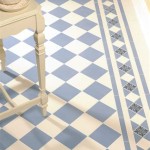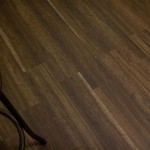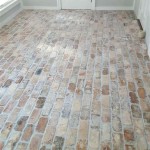Flooring Installation in Orange County, CA: A Comprehensive Guide
Orange County, California, with its diverse architectural styles and vibrant lifestyle, presents unique considerations when it comes to flooring installation. The choice of flooring material and the quality of installation significantly impact the aesthetics, comfort, and value of a property. This article provides a comprehensive overview of flooring installation in Orange County, covering various aspects ranging from material selection to the installation process itself.
The local climate in Orange County, characterized by warm, dry summers and mild, relatively wet winters, plays a crucial role in determining the suitability of different flooring options. Materials need to withstand temperature fluctuations and humidity changes to prevent warping, cracking, or other forms of damage. Homeowners and contractors alike must carefully evaluate these factors when selecting flooring materials for their projects.
Furthermore, local building codes and regulations governing flooring installation must be adhered to. These regulations often pertain to safety, noise reduction, and environmental concerns. Compliance ensures the flooring installation meets specific standards and avoids potential legal issues in the future.
Key Point 1: Selecting the Right Flooring Material
One of the most critical steps in flooring installation is selecting the appropriate material. Several factors influence this decision, including budget, aesthetic preferences, durability requirements, and the intended use of the space. The following are some popular flooring options commonly used in Orange County homes and businesses:
Hardwood Flooring: Hardwood flooring is renowned for its timeless beauty and durability. It offers a warm, natural aesthetic that enhances the appeal of almost any space. Hardwood options range from solid hardwood, which is a single piece of wood, to engineered hardwood, which consists of multiple layers bonded together. Solid hardwood is more susceptible to moisture damage and may not be suitable for installation in areas with high humidity. Engineered hardwood is generally more stable and can be installed in a wider range of environments.
The specific type of wood also impacts the performance and appearance of the flooring. Oak, maple, and walnut are popular choices for their durability and aesthetic appeal. Exotic hardwoods, such as Brazilian cherry or tigerwood, offer unique visual characteristics but may be more expensive.
Laminate Flooring: Laminate flooring provides a cost-effective alternative to hardwood. It consists of a core layer, a decorative layer (which often mimics the appearance of wood or stone), and a protective wear layer. Laminate flooring is relatively easy to install and maintain, making it a popular choice for homeowners seeking a budget-friendly and durable option.
However, laminate flooring is not as resistant to moisture as some other materials, so it may not be suitable for installation in bathrooms or laundry rooms. The quality of the wear layer also impacts the durability of the flooring; thicker wear layers provide better protection against scratches and wear.
Vinyl Flooring: Vinyl flooring is known for its exceptional durability and water resistance. It is available in various formats, including sheet vinyl, vinyl tiles, and luxury vinyl planks (LVP). Vinyl flooring is suitable for installation in high-moisture areas, such as bathrooms and kitchens, and it is also relatively easy to clean and maintain.
LVP is a particularly popular option due to its realistic wood or stone look and ease of installation. It is also more comfortable underfoot than some other hard flooring options. While generally durable, vinyl flooring can be susceptible to indentation from heavy furniture or sharp objects.
Tile Flooring: Tile flooring, including ceramic, porcelain, and stone tiles, is highly durable and resistant to water, stains, and scratches. It is a popular choice for bathrooms, kitchens, and entryways. Tile flooring can also be used outdoors, depending on the specific type of tile and its frost resistance.
Porcelain tile is denser and less porous than ceramic tile, making it more resistant to water absorption. Stone tiles, such as granite, marble, and slate, offer a luxurious and natural aesthetic, but they may require more maintenance than ceramic or porcelain tiles.
Carpet: Carpet provides warmth, comfort, and sound absorption. It is typically used in bedrooms, living rooms, and hallways. Carpet is available in various fibers, including nylon, polyester, and wool. Nylon is known for its durability, while polyester is stain-resistant. Wool is a natural fiber that is soft and resilient but can be more expensive than synthetic fibers.
The pile height and density of the carpet also impact its performance and comfort. Higher pile carpets are softer but may be more difficult to clean. Berber carpets, with their looped pile, are durable and stain-resistant.
Ultimately, the selection of the right flooring material depends on a careful evaluation of various factors, including budget, aesthetic preferences, durability requirements, and environmental considerations. Consulting with a flooring professional can help homeowners make informed decisions and choose the most suitable option for their needs.
Key Point 2: Preparing the Subfloor for Installation
Proper subfloor preparation is essential for a successful flooring installation. The subfloor provides the foundation for the new flooring, and any imperfections or issues with the subfloor can compromise the integrity and longevity of the flooring. Common subfloor materials include plywood, OSB (oriented strand board), and concrete.
Inspection: The first step in subfloor preparation is a thorough inspection to identify any problems, such as unevenness, cracks, or moisture damage. Unevenness can cause the new flooring to flex or creak, while cracks can weaken the subfloor and lead to further damage. Moisture can cause mold growth and damage to the subfloor and the new flooring.
Leveling: If the subfloor is uneven, it needs to be leveled before installing the new flooring. This can be achieved using self-leveling compound, which is a liquid mixture that spreads evenly over the subfloor and hardens to create a smooth, level surface. Alternatively, shims can be used to level specific areas of the subfloor.
Repairing: Any cracks or damage to the subfloor must be repaired before installing the new flooring. Small cracks can be filled with a patching compound, while larger cracks or damaged areas may require the replacement of the affected section of the subfloor. When replacing sections of the subfloor, it is important to use the same type and thickness of material as the existing subfloor to ensure a consistent surface.
Cleaning: The subfloor must be thoroughly cleaned to remove any dirt, debris, or adhesive residue. This can be achieved by sweeping, vacuuming, and scrubbing the subfloor with a suitable cleaning solution. A clean subfloor provides a better bonding surface for the new flooring adhesive or underlayment.
Moisture Testing: Moisture testing is crucial, especially when installing flooring over concrete subfloors. Excess moisture can cause adhesives to fail and lead to mold growth. A moisture meter can be used to measure the moisture content of the subfloor. If the moisture content is too high, it may be necessary to apply a moisture barrier before installing the new flooring.
Underlayment: In some cases, an underlayment may be required between the subfloor and the new flooring. Underlayment provides additional cushioning, sound insulation, and moisture protection. The type of underlayment required depends on the type of flooring being installed and the specific requirements of the space.
Proper subfloor preparation is a critical step in flooring installation and should not be overlooked. A well-prepared subfloor ensures the new flooring is installed correctly and will last for many years.
Key Point 3: Installation Techniques and Considerations
The specific installation techniques vary depending on the type of flooring material being installed. Different flooring materials require different adhesives, tools, and methods. It is crucial to follow the manufacturer's instructions carefully to ensure a proper installation.
Hardwood Flooring Installation: Hardwood flooring can be installed using several methods, including nailing, gluing, or floating. Nailing is typically used for solid hardwood flooring, while gluing is often used for engineered hardwood flooring. Floating involves installing the flooring without attaching it to the subfloor, allowing it to expand and contract freely.
Acclimation is crucial for hardwood flooring. The wood needs to be allowed to adjust to the temperature and humidity of the room before installation to prevent warping or cracking. The manufacturer's instructions typically specify the acclimation period, which can range from a few days to several weeks.
Laminate Flooring Installation: Laminate flooring is typically installed using a floating method. The planks or tiles are connected to each other using a click-lock system, which allows for easy installation and removal. A thin foam underlayment is typically installed beneath the laminate flooring to provide cushioning and sound insulation.
Vinyl Flooring Installation: Vinyl flooring can be installed using glue-down or loose-lay methods. Glue-down vinyl flooring requires the application of adhesive to the subfloor, while loose-lay vinyl flooring does not require adhesive and can be placed directly on the subfloor. LVP (Luxury Vinyl Plank) typically uses a click-lock system, similar to laminate flooring.
Tile Flooring Installation: Tile flooring is installed using thin-set mortar, which is a cement-based adhesive. The tiles are carefully placed on the mortar bed and leveled to ensure a consistent surface. Grout is then applied between the tiles to fill the gaps and provide a watertight seal.
Proper grout selection is important. Different types of grout are available, including sanded grout and unsanded grout. Sanded grout is typically used for wider grout lines, while unsanded grout is used for narrow grout lines. Epoxy grout is a more durable and stain-resistant option, but it is also more expensive.
Carpet Installation: Carpet is typically installed using tack strips along the perimeter of the room. The carpet is stretched over the tack strips and secured in place. Seams are joined using seam tape and a seaming iron. Padding is installed beneath the carpet to provide cushioning and extend the life of the carpet.
Proper stretching is important to prevent wrinkles or buckling in the carpet. A power stretcher is typically used to stretch the carpet tightly over the tack strips. The correct nap direction must also be considered during installation to ensure a uniform appearance.
In addition to these material-specific considerations, several general considerations apply to all flooring installations. These include ensuring proper ventilation during installation, using appropriate safety equipment, and disposing of waste materials properly. Adhering to these guidelines ensures a safe and successful flooring installation.

Waterproof Vinyl Flooring Installation Orange County Ca Fullerton Anaheim Yorba Linda Placentia

Orange County Ca Hardwood Floor Installation Sales Repair Refinishing Wood Flooring Contractor

Laminate Floor Installation In Orange County 2 Per Sqft

Laminate Flooring Sales Installation Orange County Ca Anaheim Fullerton Yorba Linda

Mr Sandless Orange County Updated July 2025 21 Photos Laguna Niguel Flooring Phone Number Yelp

Hardwood Flooring In Orange County Ca Costa Mesa Newport Beach Solid Engineered Sterling Carpet

Vinyl Flooring Installation Orange County Ca Fullerton Anaheim Yorba Linda Placentia

Flooring Store Serving Coastal Orange County Hemphill S Rugs Carpets

Best Of Orange County 2024 Place To Buy Carpet Or Flooring Register

Hardwood Flooring Orange County Ca Wood Floor Sales Installation Repair Refinishing Long Beach







